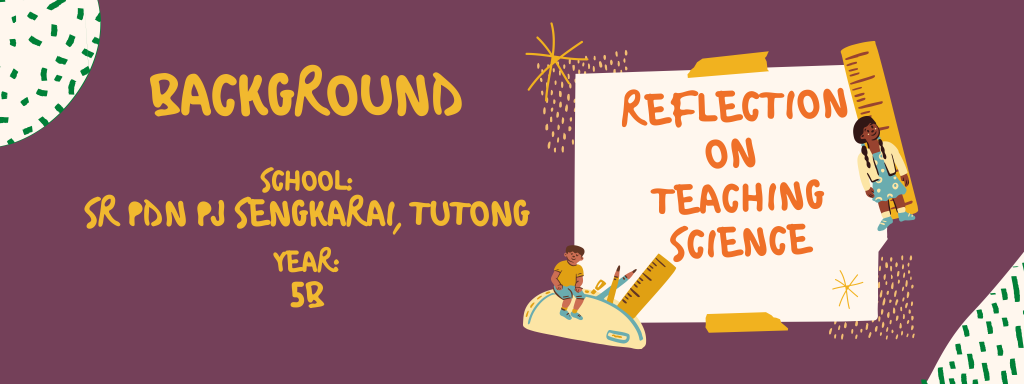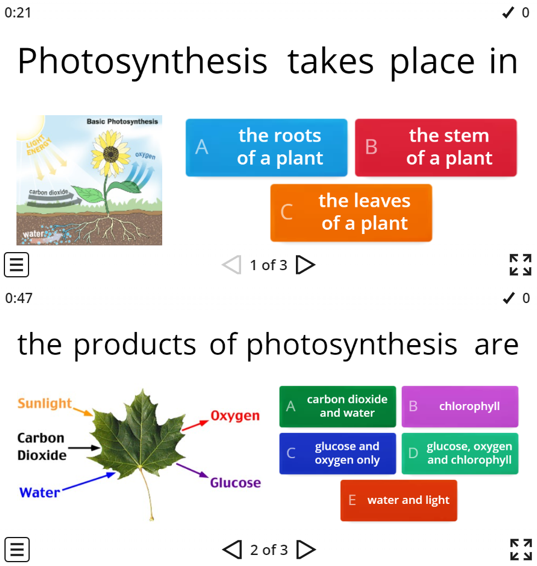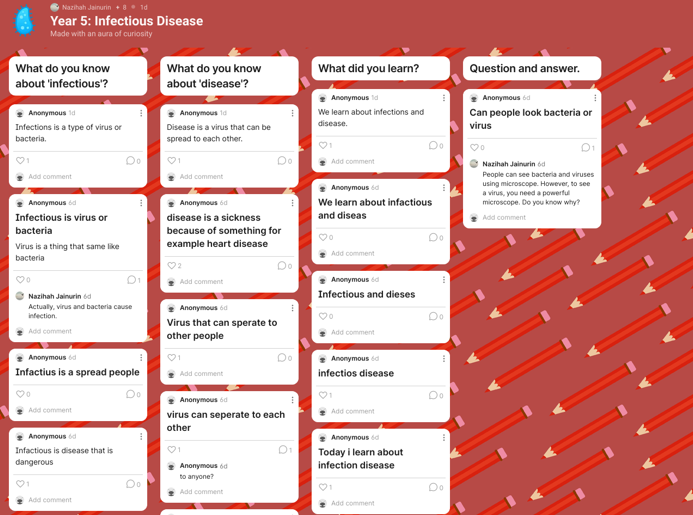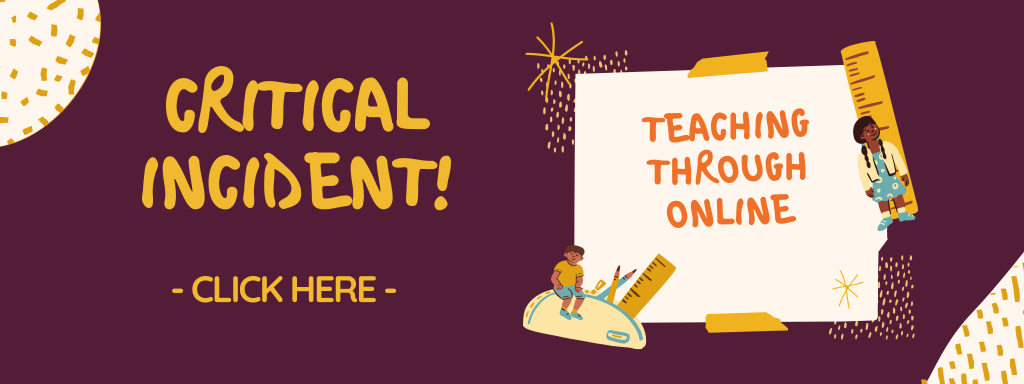
The first question that came to my mind when I knew that I was going to teach science was, “How do I teach science?”. The second question was, “How am I going to make it fun for the kids?”. Despite having science background, I had few doubts in teaching the science subject. This was due to my personal experience in learning science during primary school years. However, I did not let that mindset influence the way I want to teach science to my future students. Instead, I feel excitement and hopeful to meet the students. The entirety of this semester has been nothing but a reflection period for me. Teaching science had increased my awareness to what I am becoming as a teacher in the future and what it is that I want to do in the teaching perspective.
During PPS II, I was placed at Sekolah Rendah Pengiran Dipa Negara Pengiran Jaya Sengkarai or in short, SR PDN PJ Sengkarai, which was the same school as the one during my PPS I. The school located at Tutong area and I was given the opportunity to teach Year 5 which comprised of 18 students. The day that I rejoined the teaching staff, the teaching and learning was fully implemented through online which can be challenging for teachers, students and everyone involved in the process. Thankfully the teacher candidates, such as myself, have been exposed with few online platforms prior to the placement which made it a manageable experience for us to teach the primary students. With that being said, there were few setbacks with the online teaching and learning. Some considerations include the school culture and the students’ backgrounds may influence how the teaching and learning would be conducted.
My online teaching had been implemented mainly through live discussions, also known as synchronous learning, in the WhatsApp group chat that was specifically created for the Year 5 Science subject. In the beginning, it was an interesting and fun experience as I could see responses to my questions from my students based on their answers or questions, a similar experience to a live conversation but in the form of texts.
In education, assessment is one of the crucial components in teaching and learning process. Assessments could either be summative or formative. Black (2004) claimed that the evidence of student learning as a result of formative assessment process should be used to adjust the teaching to meet student’s learning needs. In science teaching, there were various ways of assessing students’ learning such as using the students’ worksheet, quizzes, rubrics, checklist, project and exit card (emojis). Throughout my placement at the school, I have been utilising Google Forms, Wordwall, Liveworksheets and Padlet for online assessment (refer to the E-assessment tab below).
One of, I considered, the new method employed through online is the use of Liveworksheets which is a web-based platform that uses online worksheet uploaded by teachers to automatically assess students’ answers. Liveworksheets had allowed me to create both close-ended and open-ended questions and enabled students to receive instant feedback on their learning progress. At the same time, the automated assessment is useful in minimising my time to mark and calculate the scores for most of students work through online. In contrast to that, a research by Hoang and Arch-Int (2013) asserted that such assessment is one-dimensional as it focused on students’ content knowledge rather than their activities and interactions between the learners.
Moreover, an alternative approach of assessing the students during science lesson through online is the use of online quizzes for starter, plenary and during main lesson. This can be conducted by using Wordwall, Quizizz or Kahoot, online platform that provide immediate feedback on student’s learning. However, for my online teaching, I utilised Wordwall as the main activity at the beginning of the lesson to assess their prior knowledge and a recap of previous lesson. In order for the students to gain access to the online quiz, a link was shared in the science group via Whatsapp. According to Gamage and colleagues (2019), the benefit of online quizzes or tests is that feedback can be instant and timely, giving students with instant feedback with the opportunities to improve their understanding. Recent research had proven that instant feedback to quizzes could create new approach of communication between educators and students (Gamage et al., 2019; Rinaldi et al., 2017).

Another platform that I had been using with my science students was Padlet. Padlet is an interactive virtual wall that behaves like a bulletin board in such a way that user can ‘pin’ or post various types of media including text, word documents, audio, image and videos on the wall (Deni & Zainal, 2018; Sangeetha, 2016). Several studies have shown the applications of Padlet in the education (Ellis, 2015; Wood, 2016; DeWitt et al., 2015; Sundararajan & Maquivar, 2017). The web-based tool could be exploited as a platform for online discussion, a message board, collaborative language writing activities as well as to assist activity within the classroom. I started to implement the use of Padlet during my first week of teaching science as one of my approach to assess students’ learning at the beginning and at the end of the lesson. It was observed that the students were participative in the Padlet during synchronous teaching and learning and one of them even posted a question, asking about the visibility of bacteria and virus using naked eyes. Toward the end of the lesson, I asked the students if they had any questions with regards to the topic of the day. Interestingly, none of the students asked any question but one of them posted a question in Padlet after the lesson. It seemed that Padlet has the potential to encourage the students to interact with the teacher and their peers to discuss about the science topic, not only during, but also after the lesson (asynchronously).


Teaching online had been presented with several challenges. One of the things I noticed with teaching and learning through online is the validity or authenticity of the responses. At times, it took longer time (5 minutes) for the students to come up with an answer. All things considered, it reflected back on my way of teach. For more information, refer to my Critical Incident tab for more information.


References
Black, P., & Wiliam, D. (1998). Assessment and classroom learning. Assessment in Education, 5(1), 7–74. https://doi.org/10.1080/0969595980050102
Ellis, D. (2015, October). Using Padlet to increase student engagement in lectures. In 14th European Conference on e-Learning: ECEl2015 (pp. 195-198).
Deni, A. R. M., & Zainal, Z. I. (2018, October). Padlet as an educational tool: Pedagogical considerations and lessons learnt. In Proceedings of the 10th International Conference on Education Technology and Computers (pp. 156-162).
Dewitt, D., Alias, N., & Siraj, S. (2015). Collaborative learning: Interactive debates using Padlet in a higher education institution.
Gamage, S. H., Ayres, J. R., Behrend, M. B., & Smith, E. J. (2019). Optimising Moodle quizzes for online assessments. International Journal of STEM Education, 6(1), 1-14.
Hoang, L. P., & Arch-Int, N. (2013). Assessment of Open-Ended Questions using a Multidimensional Approach for the Interaction and Collaboration of Learners in E-Learning Environments. J. Univers. Comput. Sci., 19(7), 932-949.
Rinaldi, V. D., Lorr, N. A., & Williams, K. (2017). Evaluating a technology supported interactive response system during the laboratory section of a histology course. Anatomical sciences education, 10(4), 328-338.